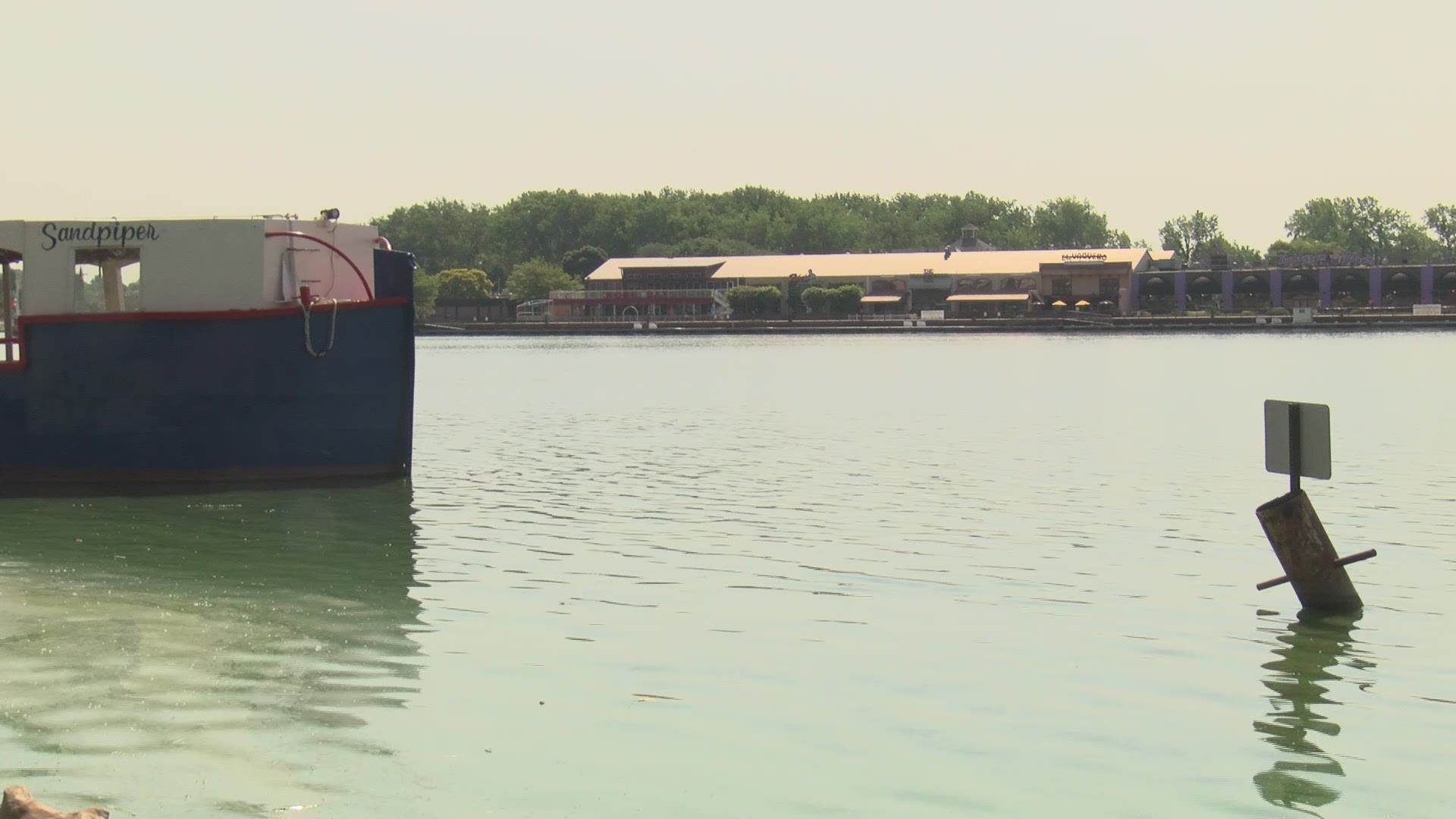TOLEDO, Ohio — The Toledo-Lucas County Health Department issued a public health advisory on Tuesday, in effect immediately for the Maumee River in downtown Toledo.
The harmful algal bloom carries microcystin in excess of levels that would be considered safe, past the 20 ppb threshold. It is present on the Maumee River between Middlegrounds Metropark and Cullen Park. An elevated recreational water advisory has been placed into effect as a result of these tests and this bloom.
Testing will be conducted to continue monitoring algal toxins.
On Wednesday, the Lucas County Commissioners released a statement voicing concern over what they called an "unusual change" in this year's algal bloom. Traditionally, the bloom makes its way from Lake Erie and into the Maumee River.
The concern is over the recent weather, due to a combination of below average rainfall causing lower water flow and extreme heat. This resulted in the development of the Maumee River bloom.
The commissioners worry for the recreational activities that citizens usually participate in on the river, like canoeing, kayaking, fishing and boating, which can be put in jeopardy by the blooms. The potential for blooms to spread from downtown to Point Place has the commissioners on alert.
The Lucas County Commissioners are pushing for aggressive, data driven action to reduce phosphorous. While the board approves of Gov. Mike DeWine's action to create the H2Ohio Fund last year, the board urges the state to take things further. They desire for the state to use a Nutrient Source Inventory tool, develoepd as a resource for farmers, and for the state to take advantage of the H2Ohio funds in known locations where nutrient run-off is at its highest, as located by the NSI tool.
The health department strongly urges all contact with the Maumee River between the two areas to be avoided. If you have made contact with water in that area, rinse your skin immediately. Symptoms of exposure to algal toxins include rash, hives, blisters, severe diarrhea and vomiting, abdominal pain, and/or difficulty breathing. If you are displaying these symptoms following contact with the Maumee River in the affected area, you should seek medical care.
Tap water is still safe to drink despite the elevated levels in the Maumee River, as our drinking water is pulled from an intake in Lake Erie and levels of microcystin measured in our area tap water have not reached critical levels. Our water is tested weekly on Tuesdays and reports can be found at the following link here.
More information from the Ohio Department of Health on algal blooms is available here.

